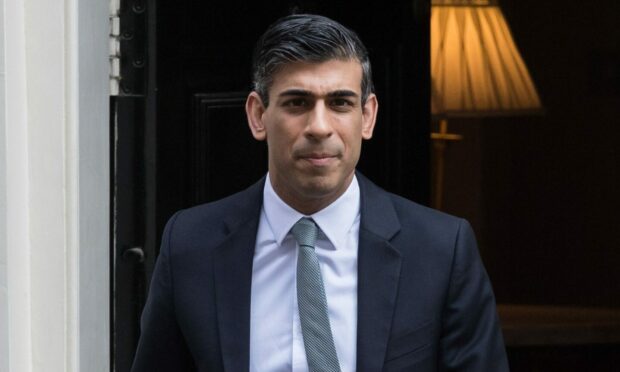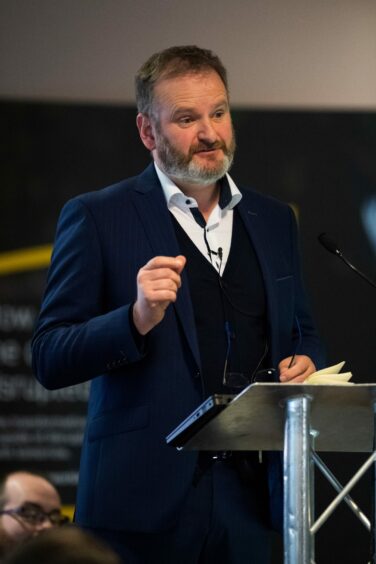Business leaders have argued against a windfall tax on oil and gas giants after Chancellor Rishi Sunak threatened to impose them.
Last night Mr Sunak insisted energy companies should pay a tax on their profits unless they “support the economy” by increasing investment in UK energy supply.
The controversial call seemed to differ from Prime Minister Boris Johnson’s own views who recently described the idea as a “tax on business”.
The soaring price of oil and gas, and rising sector profits, have led to repeated calls for a one-off windfall tax to help households with rising fuel bills.
However, Aberdeen & Grampian Chamber of Commerce (AGCC) repeated its claims that such taxes were a “blunt instrument” that put jobs and investment in the North Sea at risk.
It also issued new research which showed that taxes on the sector were already set to rise, potentially as high as £10 billion, due to spiralling oil and gas prices caused by the war in Ukraine.
Why a windfall?
Speaking in a question and answer session with users of the Mumsnet website, the Chancellor said the levy is something he would “look at”.
Labour has estimated this would raise £1.2 billion over the year ahead to provide targeted support to households and businesses.
However, the Chamber’s research shows the Treasury has already banked £1.5 billion more in the first three months of 2022 than it did over the same period in 2021.
One of the world’s leading energy tax experts has suggested that tax revenues from the North Sea could now top £10 billion in the year ahead.
Aberdeen & Grampian Chamber of Commerce (AGCC) has found that the Treasury has raked in more than £1.7 billion in tax from North Sea oil and gas firms in just 90 days, according to newly published figures.
It also said offshore operators and licensees have been paying over £19 million in tax per day since the turn of the year.
What the figures reveal
Between April 2021 and March 2022, offshore companies paid just over £3bn in tax, according to data from the Office for National Statistics (ONS).
This is a 586% increase on the previous 12 months and is the highest level of tax paid by the industry since 2013/14.
Looking at the three months from January to March this year in isolation, the industry paid £1.7 billion in tax in just 90 days, up 670% on the same time last year.
The office of Budget Responsibility (OBR) has upgraded its estimates for the fiscal years ending March 2023 to 2027, now predicting North Sea corporation tax to hit £21.4 billion, more than double previous forecasts.
This would likely drive-up energy bills and be entirely counter-productive.”
Aberdeen and Grampian Chamber of Commerce policy and marketing director Ryan Crighton.
Ryan Crighton, policy director at AGCC, added: “We have said repeatedly that the windfall tax on North Sea profits is a blunt instrument that will achieve little apart from making the North Sea – already one of the world’s most mature basins – less attractive to investors.
“That would place jobs, tax revenues and our domestic energy security at risk, and also limit the ability and appetite in investing in low carbon research and development we so desperately need. Perversely, this would likely drive-up energy bills and be entirely counter-productive.
“It is clear from these figures that the Treasury has benefited enormously already from higher energy prices – therefore offering targeted support to consumers and businesses is already within its gift.”
Derek Leith, global oil & gas tax leader at EY, said industry sources predict that the North Sea tax yield for 2022/23 may well be more than the £8.1 billion forecast and perhaps closer to £10 billion.
“If it reached £10 billion, then that would be a £7.2 billion increase from the 2020 forecast and be sufficient incremental tax revenues to fund the support to consumers that some opposition parties have called for,” he said.
“This endorses the industry view that the current tax regime, with a combined corporate tax rate of 40%, is the appropriate level of taxation for a mature oil and gas province, ensuring that HMT gets a fair share of incremental profits arising from higher commodity prices.
“To tinker with the regime where the past few years have seen such volatile commodity prices is unwise – particularly when the UK is more conscious of energy security and balance of trade issues, and where some of the companies active in the North Sea are making significant investments in the energy transition.”













Conversation